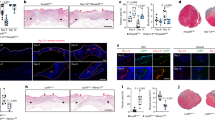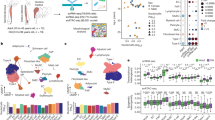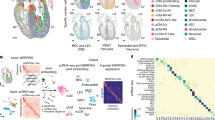Abstract
Osteoclasts resorb the mineralized matrices formed by chondrocytes or osteoblasts. The cytokine receptor activator of nuclear factor-κB ligand (RANKL) is essential for osteoclast formation and thought to be supplied by osteoblasts or their precursors, thereby linking bone formation to resorption. However, RANKL is expressed by a variety of cell types, and it is unclear which of them are essential sources for osteoclast formation. Here we have used a mouse strain in which RANKL can be conditionally deleted and a series of Cre-deleter strains to demonstrate that hypertrophic chondrocytes and osteocytes, both of which are embedded in matrix, are essential sources of the RANKL that controls mineralized cartilage resorption and bone remodeling, respectively. Moreover, osteocyte RANKL is responsible for the bone loss associated with unloading. Contrary to the current paradigm, RANKL produced by osteoblasts or their progenitors does not contribute to adult bone remodeling. These results suggest that the rate-limiting step of matrix resorption is controlled by cells embedded within the matrix itself.
This is a preview of subscription content, access via your institution
Access options
Subscribe to this journal
Receive 12 print issues and online access
$209.00 per year
only $17.42 per issue
Buy this article
- Purchase on Springer Link
- Instant access to full article PDF
Prices may be subject to local taxes which are calculated during checkout





Similar content being viewed by others
References
Kronenberg, H.M. Developmental regulation of the growth plate. Nature 423, 332–336 (2003).
Parfitt, A.M. Targeted and nontargeted bone remodeling: relationship to basic multicellular unit origination and progression. Bone 30, 5–7 (2002).
Teitelbaum, S.L. & Ross, F.P. Genetic regulation of osteoclast development and function. Nat. Rev. Genet. 4, 638–649 (2003).
Whyte, M.P. et al. Osteoprotegerin deficiency and juvenile Paget's disease. N. Engl. J. Med. 347, 175–184 (2002).
Manolagas, S.C. Birth and death of bone cells: Basic regulatory mechanisms and implications for the pathogenesis and treatment of osteoporosis. Endocr. Rev. 21, 115–137 (2000).
Kong, Y.Y. et al. OPGL is a key regulator of osteoclastogenesis, lymphocyte development and lymph-node organogenesis. Nature 397, 315–323 (1999).
Sobacchi, C. et al. Osteoclast-poor human osteopetrosis due to mutations in the gene encoding RANKL. Nat. Genet. 39, 960–962 (2007).
Kearns, A.E., Khosla, S. & Kostenuik, P.J. Receptor activator of nuclear factor κB ligand and osteoprotegerin regulation of bone remodeling in health and disease. Endocr. Rev. 29, 155–192 (2008).
O'Brien, C.A. Control of RANKL gene expression. Bone 46, 911–919 (2010).
Kobayashi, Y., Udagawa, N. & Takahashi, N. Action of RANKL and OPG for osteoclastogenesis. Crit. Rev. Eukaryot. Gene Expr. 19, 61–72 (2009).
Sims, N.A. & Gooi, J.H. Bone remodeling: multiple cellular interactions required for coupling of bone formation and resorption. Semin. Cell Dev. Biol. 19, 444–451 (2008).
Takahashi, N. et al. Osteoblastic cells are involved in osteoclast formation. Endocrinology 123, 2600–2602 (1988).
Rodan, G.A. & Martin, T.J. Role of osteoblasts in hormonal control of bone resorption–a hypothesis. Calcif. Tissue Int. 33, 349–351 (1981).
Corral, D.A. et al. Dissociation between bone resorption and bone formation in osteopenic transgenic mice. Proc. Natl. Acad. Sci. USA 95, 13835–13840 (1998).
Galli, C. et al. Commitment to the osteoblast lineage is not required for RANKL gene expression. J. Biol. Chem. 284, 12654–12662 (2009).
Li, X. et al. Targeted deletion of the sclerostin gene in mice results in increased bone formation and bone strength. J. Bone Miner. Res. 23, 860–869 (2008).
Akune, T. et al. PPARγ insufficiency enhances osteogenesis through osteoblast formation from bone marrow progenitors. J. Clin. Invest. 113, 846–855 (2004).
Ogata, N., Kawaguchi, H., Chung, U.I., Roth, S.I. & Segre, G.V. Continuous activation of G alpha q in osteoblasts results in osteopenia through impaired osteoblast differentiation. J. Biol. Chem. 282, 35757–35764 (2007).
Weinstein, R.S., Jilka, R.L., Parfitt, A.M. & Manolagas, S.C. Inhibition of osteoblastogenesis and promotion of apoptosis of osteoblasts and osteocytes by glucocorticoids. Potential mechanisms of their deleterious effects on bone. J. Clin. Invest. 102, 274–282 (1998).
Weinstein, R.S. et al. Promotion of osteoclast survival and antagonism of bisphosphonate-induced osteoclast apoptosis by glucocorticoids. J. Clin. Invest. 109, 1041–1048 (2002).
Logan, M. et al. Expression of Cre recombinase in the developing mouse limb bud driven by a Prxl enhancer. Genesis 33, 77–80 (2002).
Dougall, W.C. et al. RANK is essential for osteoclast and lymph node development. Genes Dev. 13, 2412–2424 (1999).
Rodda, S.J. & McMahon, A.P. Distinct roles for Hedgehog and canonical Wnt signaling in specification, differentiation and maintenance of osteoblast progenitors. Development 133, 3231–3244 (2006).
Kobayashi, T. et al. Dicer-dependent pathways regulate chondrocyte proliferation and differentiation. Proc. Natl. Acad. Sci. USA 105, 1949–1954 (2008).
Zhang, M. et al. Osteoblast-specific knockout of the insulin-like growth factor (IGF) receptor gene reveals an essential role of IGF signaling in bone matrix mineralization. J. Biol. Chem. 277, 44005–44012 (2002).
Lu, Y. et al. DMP1-targeted Cre expression in odontoblasts and osteocytes. J. Dent. Res. 86, 320–325 (2007).
Masuyama, R. et al. Vitamin D receptor in chondrocytes promotes osteoclastogenesis and regulates FGF23 production in osteoblasts. J. Clin. Invest. 116, 3150–3159 (2006).
Usui, M. et al. Murine and chicken chondrocytes regulate osteoclastogenesis by producing RANKL in response to BMP2. J. Bone Miner. Res. 23, 314–325 (2008).
Gebhard, S. et al. Specific expression of Cre recombinase in hypertrophic cartilage under the control of a BAC-Col10a1 promoter. Matrix Biol. 27, 693–699 (2008).
Zhao, S. et al. MLO-Y4 osteocyte-like cells support osteoclast formation and activation. J. Bone Miner. Res. 17, 2068–2079 (2002).
Collin-Osdoby, P. et al. Receptor activator of NF-κB and osteoprotegerin expression by human microvascular endothelial cells, regulation by inflammatory cytokines, and role in human osteoclastogenesis. J. Biol. Chem. 276, 20659–20672 (2001).
Kong, Y.Y. et al. Activated T cells regulate bone loss and joint destruction in adjuvant arthritis through osteoprotegerin ligand. Nature 402, 304–309 (1999).
Yasuda, H. et al. Osteoclast differentiation factor is a ligand for osteoprotegerin/osteoclastogenesis-inhibitory factor and is identical to TRANCE/RANKL. Proc. Natl. Acad. Sci. USA 95, 3597–3602 (1998).
O'Brien, C.A., Gubrij, I., Lin, S.C., Saylors, R.L. & Manolagas, S.C. STAT3 activation in stromal osteoblastic cells is required for induction of the receptor activator of NF-κB ligand and stimulation of osteoclastogenesis by gp130-utilizing cytokines or interleukin-1 but not 1,25-dihydroxyvitamin D-3 or parathyroid hormone. J. Biol. Chem. 274, 19301–19308 (1999).
Kostenuik, P.J. et al. Denosumab, a fully human monoclonal antibody to RANKL, inhibits bone resorption and increases BMD in knock-in mice that express chimeric (murine/human) RANKL. J. Bone Miner. Res. 24, 182–195 (2009).
Tatsumi, S. et al. Targeted ablation of osteocytes induces osteoporosis with defective mechanotransduction. Cell Metab. 5, 464–475 (2007).
Lacey, D.L. et al. Osteoprotegerin ligand is a cytokine that regulates osteoclast differentiation and activation. Cell 93, 165–176 (1998).
Bonewald, L.F. The amazing osteocyte. J. Bone Miner. Res. 26, 229–238 (2011).
Kamioka, H., Honjo, T. & Takano-Yamamoto, T. A three-dimensional distribution of osteocyte processes revealed by the combination of confocal laser scanning microscopy and differential interference contrast microscopy. Bone 28, 145–149 (2001).
Knothe Tate, M.L. “Whither flows the fluid in bone?” An osteocyte's perspective. J. Biomech. 36, 1409–1424 (2003).
Zelzer, E. et al. VEGFA is necessary for chondrocyte survival during bone development. Development 131, 2161–2171 (2004).
Aguirre, J.I. et al. Osteocyte apoptosis is induced by weightlessness in mice and precedes osteoclast recruitment and bone loss. J. Bone Miner. Res. 21, 605–615 (2006).
Herman, B.C., Cardoso, L., Majeska, R.J., Jepsen, K.J. & Schaffler, M.B. Activation of bone remodeling after fatigue: differential response to linear microcracks and diffuse damage. Bone 47, 766–772 (2010).
Soriano, P. Generalized lacZ expression with the ROSA26 Cre reporter strain. Nat. Genet. 21, 70–71 (1999).
O'Brien, C.A. et al. IL-6 is not required for parathyroid hormone stimulation of RANKL expression, osteoclast formation, and bone loss in mice. Am. J. Physiol. Endocrinol. Metab. 289, E784–E793 (2005).
Parfitt, A.M. et al. Bone histomorphometry: standardization of nomenclature, symbols, and units. Report of the ASBMR Histomorphometry Nomenclature Committee. J. Bone Miner. Res. 2, 595–610 (1987).
Livak, K.J. & Schmittgen, T.D. Analysis of relative gene expression data using real-time quantitative PCR and the 2(-ΔΔC(T)). Methods. 25, 402–408 (2001).
Acknowledgements
We thank P.E. Cazer, S.B. Berryhill, W. Webb, R. Shelton, A. Deloose, L.K. Climer, K. Vyas, L. Han, A.D. Warren, E.A. Hogan and J.J. Goellner for technical support and advice; and M. Almeida and H. Zhao for helpful discussions. We thank the following individuals for providing Cre-deleter strains: C.J. Tabin (Harvard Medical School), Prx1-Cre; H.M. Kronenberg (Harvard Medical School), Osx1-Cre; K. von der Mark (University of Erlangen-Nuremberg) and B. de Crombrugghe (M.D. Anderson Cancer Center), ColX-Cre; T.L. Clemens (Johns Hopkins University School of Medicine), Ocn-Cre; and J.Q. Feng (Baylor College of Dentistry) Dmp1-Cre. We thank P.D. Pajevic (Harvard Medical School) for the collagenase digestion protocol; D. Chen (University of Rochester School of Medicine) for the X-gal staining protocol; T. Bellido (Indiana University School of Medicine) and I. Aguirre (University of Florida) for advice on tail suspension; the staff of the UAMS Department of Laboratory Animal Medicine; and L. Suva and R. Skinner of the UAMS Skeletal Imaging Core. This work was supported by the following grants from the US National Institutes of Health: AR049794 (to C.A.O.) and AG13918 (to S.C.M.). Support was also provided by the Central Arkansas Veteran's Healthcare System (Merit Reviews to C.A.O., S.C.M., R.L.J. and R.S.W.), by the UAMS Translational Research Institute (1UL1RR029884) and by UAMS tobacco settlement funds.
Author information
Authors and Affiliations
Contributions
J.X. carried out the conditional deletion breeding, analysis of gene expression, histomorphometry, immunochemistry and tail-suspension studies. M.O. carried out the R26R breeding and histological analysis of X-gal staining. C.A.O. designed experiments, created the RANKL-flox mice and prepared the first draft of the manuscript. R.L.J., R.S.W., S.C.M. and C.A.O. provided reagents, contributed methods, discussed results and revised the manuscript.
Corresponding author
Ethics declarations
Competing interests
The authors declare no competing financial interests.
Supplementary information
Supplementary Text and Figures
Supplementary Methods and Supplementary Figures 1–6 (PDF 1647 kb)
Rights and permissions
About this article
Cite this article
Xiong, J., Onal, M., Jilka, R. et al. Matrix-embedded cells control osteoclast formation. Nat Med 17, 1235–1241 (2011). https://doi.org/10.1038/nm.2448
Received:
Accepted:
Published:
Issue Date:
DOI: https://doi.org/10.1038/nm.2448
This article is cited by
-
Medication-related osteonecrosis of the jaw (MRONJ): a review of pathogenesis hypothesis and therapy strategies
Archives of Toxicology (2024)
-
HERC1 deficiency causes osteopenia through transcriptional program dysregulation during bone remodeling
Cell Death & Disease (2023)
-
Hematopoietic and stromal DMP1-Cre labeled cells form a unique niche in the bone marrow
Scientific Reports (2023)
-
IgSF11-mediated phosphorylation of pyruvate kinase M2 regulates osteoclast differentiation and prevents pathological bone loss
Bone Research (2023)
-
Targeting strategies for bone diseases: signaling pathways and clinical studies
Signal Transduction and Targeted Therapy (2023)



